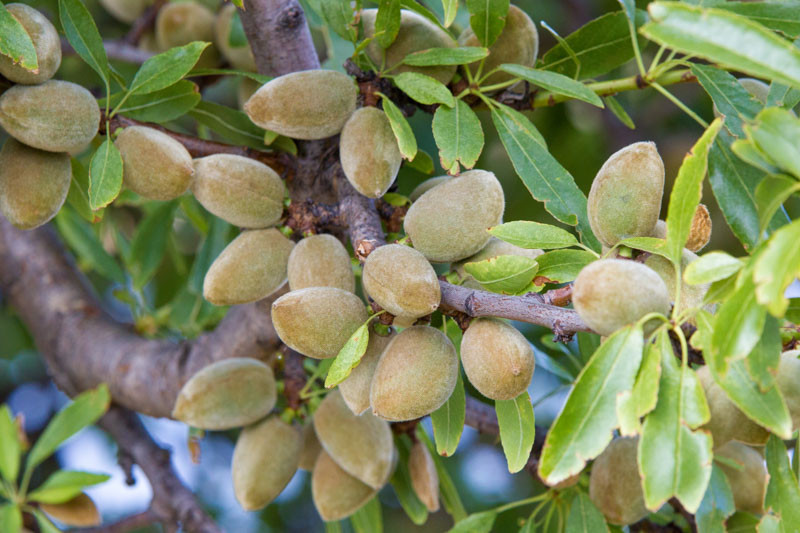
Almond Tree
Prunus dulcis
Basic Information
🌿 Family: Rosaceae🗺️ Zone: 7-9
Other Names:
- Sweet Almond
🌡️ Ideal Temperature : 60°F – 85°F
🔥 Heat Tolerance: Up to 100°F
❄️ Cold Tolerance: Down to 10°F
🌱 Type: Perennial
Layers
- Canopy
Functions
- Edible
- Wildlife Attractor
- Windbreaker
- Border Plant
Pests
No pests associated with this plant.
Description
The almond tree (Prunus dulcis) is a deciduous tree native to the Middle East and South Asia. It typically grows to a height of 4–10 meters (13–33 feet) with a trunk diameter of up to 30 centimeters (12 inches). The tree produces beautiful white to pale pink flowers in early spring before the leaves emerge. The fruit is a drupe, consisting of an outer hull and a hard shell with the edible seed, commonly referred to as the almond nut, inside.
🌞💧 Sun and Water Requirements:
Almond trees thrive in full sun, requiring at least 6–8 hours of direct sunlight daily. They prefer well-drained soils and are drought-tolerant once established but benefit from regular watering during dry periods, especially in the growing season.
✂️🫘 Methods to Propagate:
Almonds are commonly propagated by grafting onto rootstocks compatible with the soil and climate conditions. Seed propagation is possible but less common due to variability in fruit quality.
🧑🌾👩🌾 When to Harvest:
Almonds are typically harvested in late summer to early autumn when the hulls split open, revealing the shell. The nuts are shaken from the tree and allowed to dry before storage.
Purpose
- **Edible**: Almonds are highly nutritious nuts rich in protein, healthy fats, vitamins, and minerals, widely used in culinary applications.
- **Wildlife Attractor**: The tree's flowers attract pollinators such as bees, essential for almond production.
- **Windbreaker**: When planted in rows, almond trees can serve as effective windbreaks, protecting other crops from wind damage.
- **Border Plant**: Almond trees can be used to define property lines or garden sections due to their manageable size and aesthetic appeal.